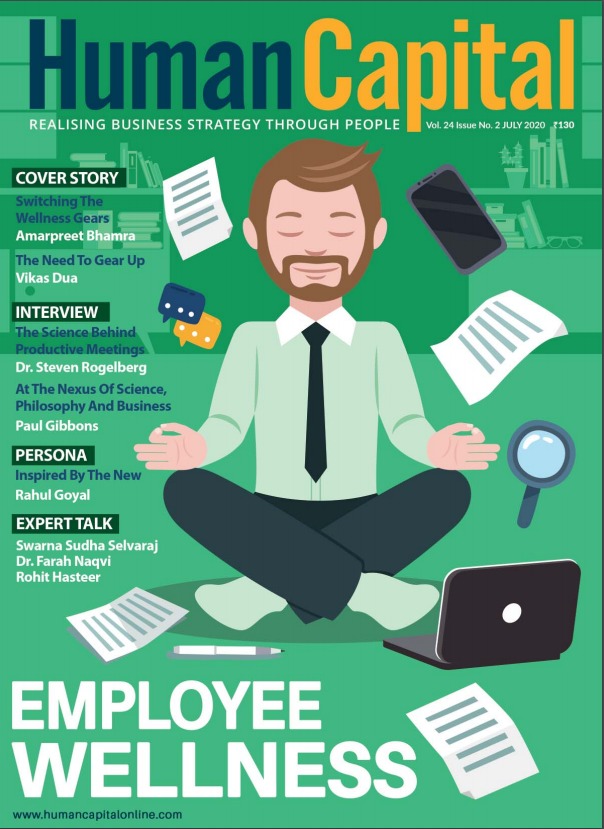By definition, harassment is humiliating, demeaning and embarrassing a person. In practice, hurting the fundamental needs of a person counts as harassment.
It was on the last day of college that a group of students saw their Head of Department smile for the first time. The Professor was so harsh and demeaning to the students that they shuddered at the very thought of him. They gathered courage and asked him why he was so rude to them in their classes. The Professor replied, “I was preparing you for the toxic corporate culture.” There are many people like this Professor who have the same perception. Is such a perception right? A monster poll of 2019 reports that 90% of the survey participants were bullied at the job.
Types of Harassment
In the past few years, prevention of sexual harassment has gotten a lot of attention, filling a large void in identifying and understanding the root of harassment. However, the focus on sexual harassment has overshadowed other kinds of harassments that happen at the workplace. Harassments of such type are equally poisonous and vitiating to the organisation culture and hamper the business and the lives of the people in the long run.
By definition, harassment is humiliating, demeaning and embarrassing a person. In practice, hurting the fundamental needs of a person counts as harassment. Based on the needs that are being hurt, harassment is of three types.
1. Psychological Harassment
This is invisible harassment. This hurts the peace of mind of an individual and hits the esteem and the need for belongingness. Victims often do not realise that they are being harassed. Psychological harassment can be far more damaging than any other kind of harassment and its scars can take years to heal. The various shades of psychological harassment include
a. Assigning unrealistic targets
b. Assigning demeaning work
c. Mocking, insulting in front of people
d. Intrusion in personal life
e. Denying or ignoring presence
2. Physical Harassment
This hurts the body of an individual and infringes upon their safety needs. There are many shades of physical harassment including
a. Causing physical harm
b. Touching a person inappropriately
c. Threatening to cause physical damage
d. Destroying property to intimidate
e. Asking people to punish themselves (e.g. Slap yourself, Stand in the Sun)
3. Economic Harassment
This hurts the livelihood of an individual and impacts his/her physiological needs. The shades of economic harassment include
a. Not approving attendance
b. Holding salary
c. Disapproving genuine reimbursement claims
Who does the harassment?
Harassers do not come from outside. They are around us. It is a difficult task to recognise them. Do you remember the iconic character “Hari Sadu” aka H for Hitler, A for Arrogant, R for Rascal? These adjectives are some of the characteristics of a harasser.
The Monster survey of 2019 elaborates that of the 90% of people who are harassed, 50% of people are harassed by their superiors and 40% of people are harassed by their coworkers. However, this survey missed out on an important category of harassers called irate customers.
Why does harassment happen?
The fundamental reason for harassment is fear. When people fear something, they try to overcome their fear by harassing others. FEAR is also an acronym that depicts the key reasons for harassment (Frustration, Exploitation, Ambition, Racism).
1. Frustration: When a flight gets delayed, you would have seen people pouncing on the airline staff demanding answers that they clearly do not have. This is frustration. When a person does not get the desired service or expected results it leads to disappointment. People who do not know how to deal with their disappointment get frustrated and they keep venting out their frustration on soft targets.
2. Exploitation: Many people in resourceful positions take advantage of their positions. As the Stanley Milgram experiment depicts, people get exploited in the name of authority and obedience. People often get exploited expecting something in return as well.
3. Ambition: Corporates thrive by creating a competitive spirit. The competitive spirit is boosted by introducing incentives for achieving unrealistic targets. This competitive spirit flames ambition in the minds of people. At times, ambition makes people walk over other people.
4. Racism: The fear of being singled out forces people to favour other people who they perceive as their own. The extension of this philosophy forces them to disfavour people who they do not perceive as their own.
9 Ways to prevent Harassment
There is no magic pill to prevent harassment. Still, there are systematic methods and processes through which HR professionals can ensure a harassment-free workplace.
1. Manager education: “Kyunki saas bhi kabhi bahu thi”. This is how we have been training our mothers-in-law. We have been training our managers in the same manner. There is a need for organisations to formally train their managers on managing people, handling dissatisfaction, setting expectations, holding a dialogue and providing feedback. Lack of skills leads to harassment.
2. Consequence Management: To handle customer harassment of airline staff due to flight delay, airlines got together and brought a resolution that any misbehaviour towards airline staff now puts the customers on the no-fly list. Similarly, consequence management deters people from venting out their frustration in the wrong ways.
3. Behaviour Alignment: The Values of an organisation make it human friendly. These values should be embedded in the behaviours. For example, if people are measured only on numbers during their quarterly assessments, they will do anything to get these numbers. Hence, it is important to embed “Desired Behaviours” in the quarterly assessment alongside numbers so that people remember to abide by the values and behaviours of the organisations.
4. Balancing incentives: Designing incentives is an art. It has a direct impact on the fabric of an organisation. If people at the top have heavy incentives, the rest of the organisation feels the pressure and harassment due to targets. Balancing incentives across various levels makes it easier for people to motivate themselves and align to targets.
5. Job Rotations and Crossfunctional teams: A proper job rotation programme or a cross-functional team programme ensures that in-groups created within the organisation are broken. When people work with people outside their group and correct their misconceptions, instances of racism reduce.
6. Competency-based recruitment: Instead of leaving the recruitment to the judgement of the supervisor, introducing competency-based shortlisting takes out the biases. Also, an interview by an expert outside the department further reduces the chances of discrimination.
7. Employee Education: People must know their rights, dos and don’ts, and complaint processes. Educated employees are less likely to be harassed. At the same time, emphasis on education deters harassers.
8. Handling Complaints: Employee education is not sufficient. You need to have a process to handle complaints. People get confidence when they see that complaints are being acted upon.
9. Culture Keepers: You cannot just wait for people to complain. You need culture keepers with their ears on the ground. Culture keepers keep you honest.
Manager Education and consequence management take care of frustration. Behaviour alignment and balancing incentives address issues of ambition. Job rotations, cross functional teams and competency-based recruitment resolve the racism issues. Employee Education, Handling Complaints and Culture Keepers eliminate exploitation.
Harassment is another H in HR that forms the base for several important HR practices.
Has COVID-19 forever changed the way we live and work?
Trending
-
SBI General Insurance Launches Digital Health Campaign
-
CredR Rolls Out 'Life Happens' Leave For Its Employees
-
Meesho Announces 30-Week Gender-Neutral Parental Leave Policy
-
Microsoft Unveils Tech Resilience Curriculum To Foster An Inclusive Future
-
60% Indian Professionals Looking For Job Change Due To COVID: Survey
-
SpringPeople And Siemens Collaborate For Digital Transformation Push
-
86% Professionals Believe Hybrid Work Is Essential For Work Life Balance: Report
-
Almost 1 In Every 3 People's Personal Life Affected Due To Work Stress
-
Meesho Rolls Out Reset And Recharge Policy For Employees
-
80% Of Talent Leaders & Academics Say Pandemic Changed Skill Needs For Youth: Report
-
Hero Electric Rolls Out 'Hero Care' Program For Employees
-
Human Capital In Collaboration With ASSOCHAM Hosts Virtual Conference
-
IKEA India, Tata STRIVE Collaborate To Create Employability And Entrepreneurship Opportunities
-
SAP India, Microsoft Launch Tech Skilling Program for Young Women
-
DXC Technology, NASSCOM Collaborate For Employability Skills Program
-
Lenskart To Hire Over 2000 Employees Across India By 2022
-
Mindtree Launches Learn-and-Earn Program
-
Tata AIA Extends 'Raksha Ka Teeka' To Its Employees
-
Swadesh Behera Is The New CPO Of Titan
-
NetConnect Global Plans To Recruit 5000 Tech Professionals In India
-
Hubhopper Plans To Hire 60% Of Indian Podcasters By 2022
-
Corporate India Needs More Women In Leadership Roles: Report
-
Aon to Invest $30 Million and Create 10,000 Apprenticeships by 2030
-
Tech Mahindra Launches ‘Gift a Career’ Initiative for Upskilling of Youth
-
40% Women Prefer Flexible Working Options in Post-COVID World: Survey
-
3 out of 4 companies believe they can effectively hire employees virtually: Report
-
Vodafone , CGI and NASSCOM Foundation launch digital skills platform
-
Odisha: Bank, postal employees to deliver cash for elderly, differently-abled persons
-
Skill India launches AI-based digital platform for "Skilled Workforce"
-
Hiring activity declines 6.73% in first quarter: Survey
-
70% startups impacted by COVID-19 pandemic
-
Bajaj Allianz Life ropes in Santanu Banerjee as CHRO
-
Over 70 Percent MSMEs look at cutting jobs to sustain businesses
-
93 Per Cent employees stressed about returning to office post-lockdown
-
Johnson & Johnson India announces family benefits for same gender partners
-
Indian firms turning friendly towards working mothers
-
Welspun India names Rajendra Mehta as new CHRO
-
Wipro partners with NASSCOM to launch Future Skills platform



Human Capital is niche media organisation for HR and Corporate. Our aim is to create an outstanding user experience for all our clients, readers, employers and employees through inspiring, industry-leading content pieces in the form of case studies, analysis, expert reports, authored articles and blogs. We cover topics such as talent acquisition, learning and development, diversity and inclusion, leadership, compensation, recruitment and many more.
Subscribe Now












































Comment